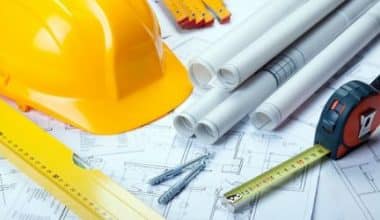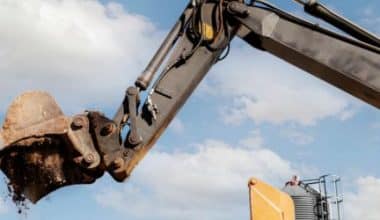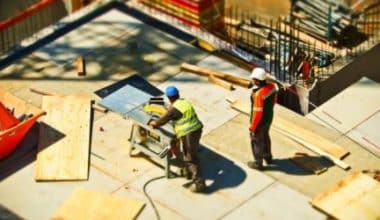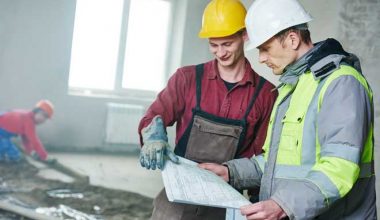Today we are going to deal with the topic “spalling”. we will be dealing with the term and its component which involves: spalling in concrete, bricks, concrete repair, and its definition.
Now let us take a comprehensive study on each of them.
Spalling
This is the result of water entering brick, concrete, or natural stone. It forces the surface to peel, pop out, or flake off. It’s also in identification as flaking, especially in limestone.
Spalling happens in concrete because of moisture in the concrete. Moisture and often salt, too push outward from the inside in basements especially. Spalling can eventually cause crumbling and destruction of a structure. It also refers to the flaking, cracking, peeling, crumbling, or chipping of stone or bricks, particularly where areas of the surface are off. This can occur as a result of water penetration, freezing, heating (such as during a fire), or mechanical processes.
Spalling usually occurs for one of three reasons, or sometimes a combination of these reasons. Salt, particularly the sodium chloride that’s use on frozen roads in many northern states, can result in oxidation or rusting of reinforcing steel when it’s repeatedly in an introduction to a surface or building.
Spalling is a term use to describe areas of concrete that have a crack and are delaminated from the substrate. There are a number of reasons why spalling occurs including freeze-thaw cycling, the expansive effects of Alkali-Silica Reaction, or exposure to fire. However, the most common cause of spalling is the corrosion of embedded steel reinforcement bars or steel sections. Corroding steel can expand up to ten times its original volume, exerting stress on the surrounding concrete. Spalling can have wide-ranging consequences in terms of health and safety, structural integrity, and asset value
Now, let us take a study on concrete spalling.
Concrete Spalling
Concrete spalling typically begins when the steel reinforcing embedded within the concrete member rusts. Contrary to popular belief, concrete is porous. Rusting of the embedded steel reinforcing occurs when that reinforcing bar is exposed to water and air; without both of these elements, the steel bar does not rust. When expose to both of those elements, a chemical reaction takes place wherein iron oxide (rust) is in production.
Spalling that occurs in a concrete driveway or sidewalk typically happens because the weather changed during the setting process or something else occurred to prevent the concrete from finishing its curing. Tearing out the driveway isn’t always necessary to fix spalling in concrete. Sometimes the top layer can be out, and a new layer poured in its place.
Concrete spalling affects a wide variety of structures including concrete framed buildings, multi-story car parks, bridges, jetties, tanks, and bunds
Bricks Spalling
Brick spalling is when the surface of a brick flakes off. The brick is deteriorating due to the cycle of freezing and thawing moisture. This type of brick spalling deterioration occurs when moisture trapped inside the brick freezes and then thaws.
Spalling damage to bricks befalls overtime when bricks get wet. Since bricks are the cause of clay which is a porous material, they easily receive water. When the temperature drops that water will freeze and expand, as water does when it freezes. As it expands, the ice will push small pieces of the brick out of its way. That can create a small crack.
As the weather warms back up, the water will melt and run out of the brick. The next time this process happens, though there can be a little different because now the water can fill that small crack that was build by the expanding ice. When that water starts to expand, that little crack will get just a little bit bigger. You can see where this is going. Eventually, you’ll have large cracks or even deteriorating brick. Sometimes the front layer of brick will flake off. knowing this as brick spalling.

Concrete Spalling Repair
Repair of concrete spalling varies based on the severity of the damage, type, and location of the concrete structure. It should be performed based on recommendations of applicable codes such as ACI Code and BS EN 1504.
#1. Clean Spalled Concrete Area
Clean the area to be repaired from any dirt to eliminate bond breaker agents. If heavy stains and dirt build-up, then a pressure washer may be needed to properly clean the surface.
#2. Remove Weak Concrete
- Remove loose and broken concrete from the area using a hammer and chisel.
- Sometimes, shot blasting or grinding may be needed for proper surface preparation.
- It is recommended to remove about 3.81cm deep of concrete to conduct a successful repair.
- It is advised to strongly tap the surrounding area with a hammer to check for possible deterioration.
- A hollow sound is a sign of deteriorated concrete and should be in elimination. This prevent the need for future repairing of concrete.
- It is advised to cut the rectangular part of the concrete (as shown in Fig. 3) so that the patching could be done and get the concrete contained within the specified area. This offers better results.
- Finally, eliminate dust and debris using vacuum.
#3. Clean and Coating Corroded Steel Bars
Clean the rebar from corrosion or other dirt using a wire brush and then, apply a protective coating to avoid rusting
#4. Apply Repair Material Mixture
- There are a variety of products to use depending on the size of the repair, it is deep.
- If the spalling depth is less than 1/3 of the concrete thickness, the concrete usually can receive a surface repair.
- However, for damages greater than 1/3 of the concrete depth, steel bars may need to be place and a full depth restoration can be in need.
- Roughen affected surface and apply suitable adhesion agent to improve bonding.
- After that, patch the area using a suitable admixture.
- The best-recommended patching material is Portland-cement-base or epoxy.
- It is require to select patching material with thermal expansion close to that of existing concrete.
- Consider ambient temperature during patching since it affects the patching material.
- The ambient temperature shall be above 4.5C.
- Damage on driveways, walkways, and other horizontal surfaces may be in replacement with a cementitious overlay.
- If the tender area is next to a joint, ensure that it is restore properly so as to give some allowance for expansion of the member.
#5. Finishing
Using a margin trowel, scrape off the excess product and apply the finishing touches to the surface to level it, as shown in.
#6. Curing
Cure the material adequately to make sure that it gains the required strength.
#7. Apply Pain or Coat on Repaired Surface
After the material is set completely, then apply paint or waterproofing membrane to avoid re-occurrence of spalling.
Spalling Definition
The spalling definition is a breakaway of concrete surface that often extends to the top layers of reinforcing steel. Spalls may be 150 mm or more in diameter and 25mm or more in-depth, and the occurrence of smaller spalls is also possible as per ACI 302.1R-4. Spalling of concrete affects a broad variety of structures including framed buildings, multi-story car parks, bridges, jetties, tanks, and bunds.
Spalling leaves the concrete surface patchy and pitted while exposing aggregate underneath. As soon as spalling is in sight, it should be properly repair otherwise it compromises concrete surface integrity and risks the ultimate capacity of the member. Added to that, in the definition of spalling, it could change the beautiful appearance of the structure.
The terms spall, spalling, and spallation are adopt by particle physicists; in neutron scattering instruments, neutrons are in generation by bombarding a uranium target with a stream of atoms. The neutrons that are remove from the target are known as spalls.
What Is Spalling Damage?
As soon as spalling is in sight, it should be properly repaired otherwise it compromises concrete surface integrity and risks the ultimate capacity of the member
What Does Concrete Spalling Mean?
Repair of concrete spalling varies based on the severity of the damage, type, and location of a concrete structure.
What Is Spalling in Building?
Concrete spalling affects a wide range of structures, including framed buildings, multi-story car parks, bridges, jetties, tanks, and bunds.
What Are the Types of Spalling?
There are three main types of spalling: aggregate spalling, corner spalling (also called “sloughing off”), and explosive spalling. When aggregate breaks close to the surface, it causes small pieces to fly off the surface. This is called “aggregate spalling.”
How Can You Tell if Concrete Is Spalling?
If your concrete surface is flaking, chipping, or missing large chunks, this is a sign of spalling. This shows that the coarse, rocky concrete aggregate is coming through. Those are the signs, but there’s more to spalling concrete than just how it looks on the surface.
Conclusion
I believe that you have really understood the word spalling in concrete, bricks, its repair in concrete, and its definition in this article. Thereby, we can now tackle the issues that come with it.






